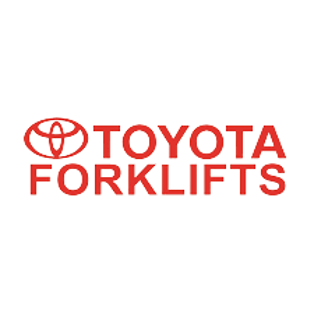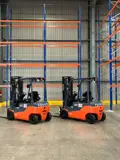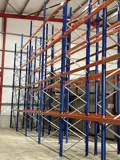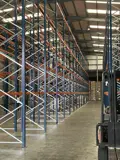|
|
Multiple beam lengths and frame heights it can be easily assembled to suit any space and forklift, maximizing storage and floor space. |
|
|
Adjustable pallet racking is the most popular form of racking and offers the most variation. |
|
|
It is designed for the storage of pallets to be accessed by forklifts via an isle parallel to the racks. To view more visit www.palletracking.ie |
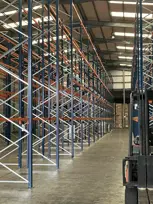
Pallet racking
Pallet racking, also known as pallet storage racks or pallet shelving, is a system of shelving designed to store and organize palletized goods in warehouses, distribution centers, and industrial facilities. Pallet racking provides efficient utilization of vertical space while allowing easy access to stored items. Here's an overview of pallet racking systems:
Key Features and Types of Pallet Racking:
-
Selective Pallet Racking: This is the most common type of pallet racking system. It consists of vertical frames, horizontal beams, and diagonal bracing. Each level accommodates one pallet, providing direct access to each stored pallet.
-
Drive-In and Drive-Through Racking: These systems allow forklifts to drive directly into the racking system. Drive-In racking has one entry point, while Drive-Through racking has entry and exit points on opposite ends, allowing for a first-in, first-out (FIFO) inventory system.
-
Push-Back Racking: In this system, pallets are loaded onto wheeled carts that are placed on inclined rails. When a new pallet is loaded, it pushes the existing pallet back. It's a high-density option with a Last-In, First-Out (LIFO) inventory method.
-
Pallet Flow Racking: Pallets are loaded from one side and flow to the other side on roller tracks, using gravity for movement. It's also a high-density solution with a FIFO inventory method.
-
Cantilever Racking: Designed for the storage of longer or irregularly shaped items, cantilever racking features arms extending from vertical columns to support the load.
-
Double Deep Racking: Similar to selective racking, but pallets are stored two deep, doubling the storage capacity while slightly reducing accessibility.
Advantages of Pallet Racking:
-
Maximized Space Utilization: Pallet racking systems make efficient use of vertical space, allowing higher storage density compared to traditional shelving.
-
Direct Access: Selective racking provides direct access to each pallet, making it suitable for operations where items need to be frequently accessed.
-
Organization: Pallet racking helps maintain an organized storage area, making it easier to locate and retrieve items.
-
Improved Inventory Management: Different types of racking systems allow for different inventory management methods, such as FIFO or LIFO.
-
Flexibility: Pallet racking systems can be customized and adjusted to accommodate various pallet sizes and load weights.
Considerations:
-
Load Capacity: Choose a pallet racking system that can safely support the weight of your heaviest pallet loads.
-
Storage Needs: Consider the types of items you'll be storing and the frequency of access. Different racking systems have varying levels of accessibility.
-
Warehouse Layout: Optimize the layout of your warehouse to ensure efficient flow and accessibility of forklifts.
-
Safety: Proper installation, regular maintenance, and adherence to safety guidelines are crucial for the safe operation of pallet racking systems.
-
Regulations: Be aware of local safety regulations and standards related to pallet racking systems.
When planning a pallet racking system for your facility, it's recommended to consult with professionals who specialize in warehouse layout and storage solutions. They can help you design a system that meets your specific needs and ensures safe and efficient storage and retrieval of goods.


